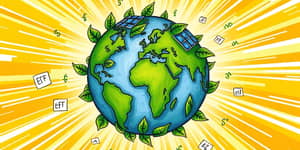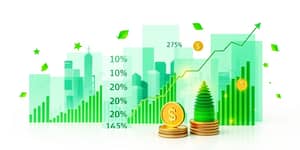
In an era where environmental challenges demand urgent solutions, investors are increasingly aligning capital with the United Nations’ Sustainable Development Goals (SDGs). Funds that specifically target environmental SDGs not only seek financial returns but also strive for measurable ecological impact. Tracking their performance requires a holistic approach combining traditional financial metrics with specialized sustainability indicators. As the global community races to meet goals on climate action, clean energy, and biodiversity, these funds stand at the intersection of profit and purpose.
The art and science of monitoring SDG-aligned investments have evolved significantly. Gone are the days when simple exclusion lists sufficed. Today, fund managers and asset owners turn to comprehensive dashboards and indices that measure progress toward specific targets. By embedding both financial and social data, stakeholders can evaluate how each portfolio company contributes to planetary well-being while generating returns.
Environmental, Social, and Governance (ESG) ratings laid the groundwork for sustainable investing. However, investors now demand tools that map directly to the SDGs themselves. This shift has given rise to dedicated SDG scores, which assess corporate activities against the UN’s 17 goals. Among these, six environmental goals take center stage: Clean Water and Sanitation (SDG 6), Affordable and Clean Energy (SDG 7), Responsible Consumption and Production (SDG 12), Climate Action (SDG 13), Life Below Water (SDG 14), and Life on Land (SDG 15).
Tracking methodologies combine country-level reporting with fund-specific metrics and provide dynamic insights:
Mixed but encouraging results characterize the recent performance of SDG-aligned funds. In January 2025, two leading MSCI ESG indices demonstrated tangible outperformance compared to their conventional counterparts:
When viewed over longer horizons, the MSCI Emerging Markets ESG Leaders Index remains exceptional. It outperformed by 6.23% over one year, by 14 basis points over five years, and by 73 basis points over a decade. Other equity benchmarks have delivered mixed outcomes, while fixed income ESG indices have closely tracked traditional bond indices.
Despite financial advances, systemic obstacles hinder tangible societal progress. For instance, more than 90% of countries are not on track to meet their Climate Action targets (SDG 13), as greenhouse gas emissions continue to climb.
Several interrelated issues exacerbate the shortfall:
While ESG metrics offer broad insights into corporate responsibility, SDG scores provide direct alignment with global development targets. ESG assessments typically cover governance structures, labor practices, and environmental policies. In contrast, SDG ratings evaluate contributions to specific UN goals, such as reducing water scarcity or expanding renewable energy capacity.
Investors are increasingly combining both frameworks. They use ESG screens to filter out harmful industries, then apply SDG scoring to identify companies whose core activities drive environmental progress. This dual approach helps ensure that portfolios deliver positive long-term impact rather than merely avoiding negatives.
The 2025 Sustainable Development Report highlights standout performers at the national level, which indirectly influences fund performance through policy incentives and regulated markets. The top three countries in overall environmental SDG performance are:
Though no nation has fully met all environmental targets, these leaders demonstrate that rigorous policy frameworks and investment in clean technologies can yield rapid gains. Their experiences offer valuable lessons for emerging economies and developing markets seeking to scale sustainable finance.
Transforming global capital flows into catalysts for environmental resilience requires coordinated efforts. Policymakers and regulators are examining reforms to the global financial architecture, aiming to embed sustainability criteria into banking standards, sovereign debt issuance, and central bank asset purchases.
Meanwhile, investors must sharpen their tools, employing advanced analytics and revenue-aligned portfolio construction. By revealing their preferences through capital allocation, asset owners send powerful signals to markets, encouraging companies to prioritize resource efficiency and low-carbon technologies.
As 2025 unfolds, there is an urgent need for stronger collaboration among governments, financial institutions, and civil society. Only through integrated, multi-stakeholder initiatives can we bridge the gap between lofty commitments and on-the-ground realities. Funds tied to environmental SDGs are more than financial products—they are beacons of a new investment paradigm that values both profit and planetary health.
Ultimately, the journey to sustainable development is neither linear nor certain. Yet, by rigorously tracking performance, refining methodologies, and holding all actors accountable, we can steer global finance toward outcomes that benefit people and the planet alike. The time to act is now—investors and policymakers must seize the moment to ensure that capital catalyzes the enduring transformation our world so desperately needs.
References













